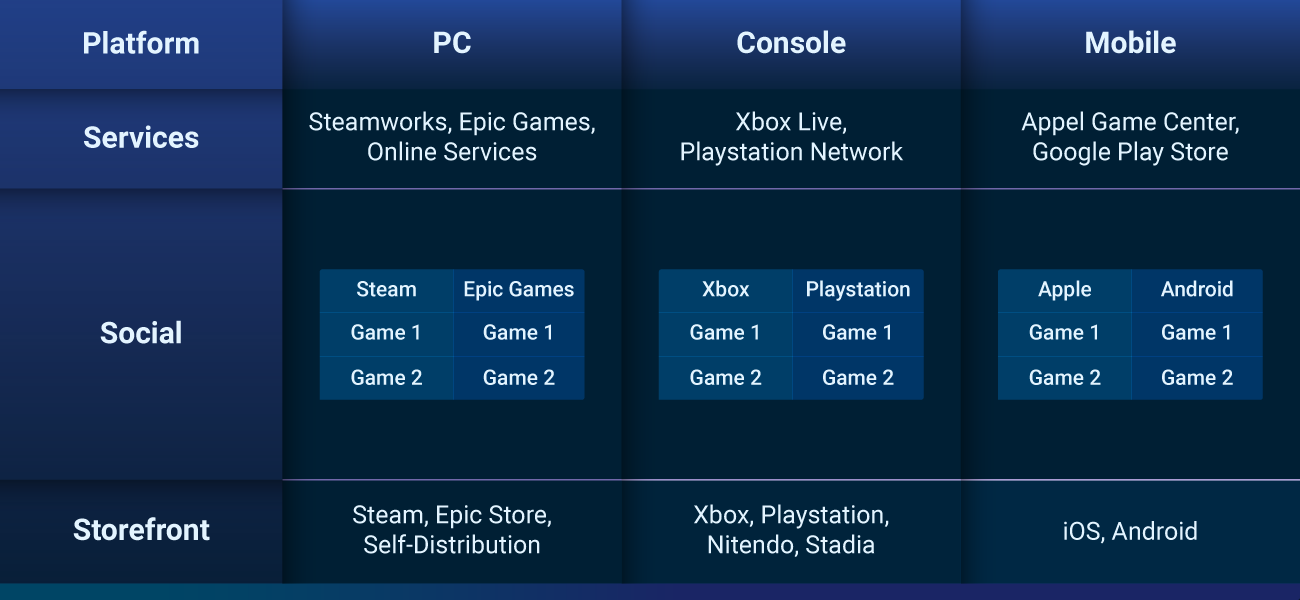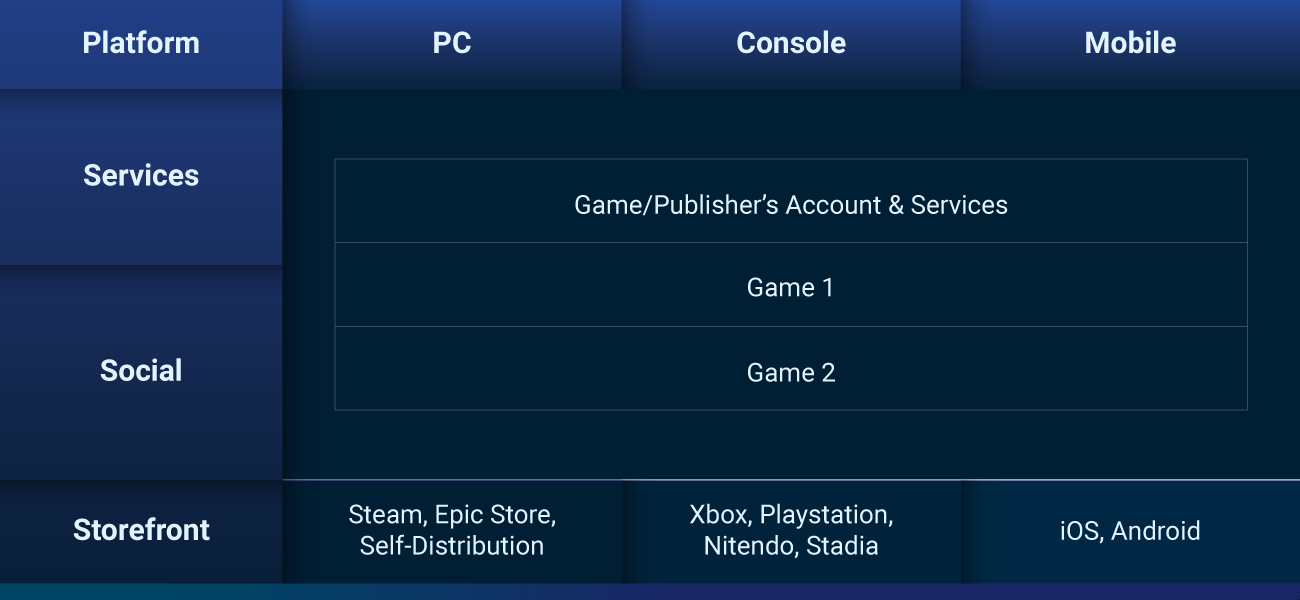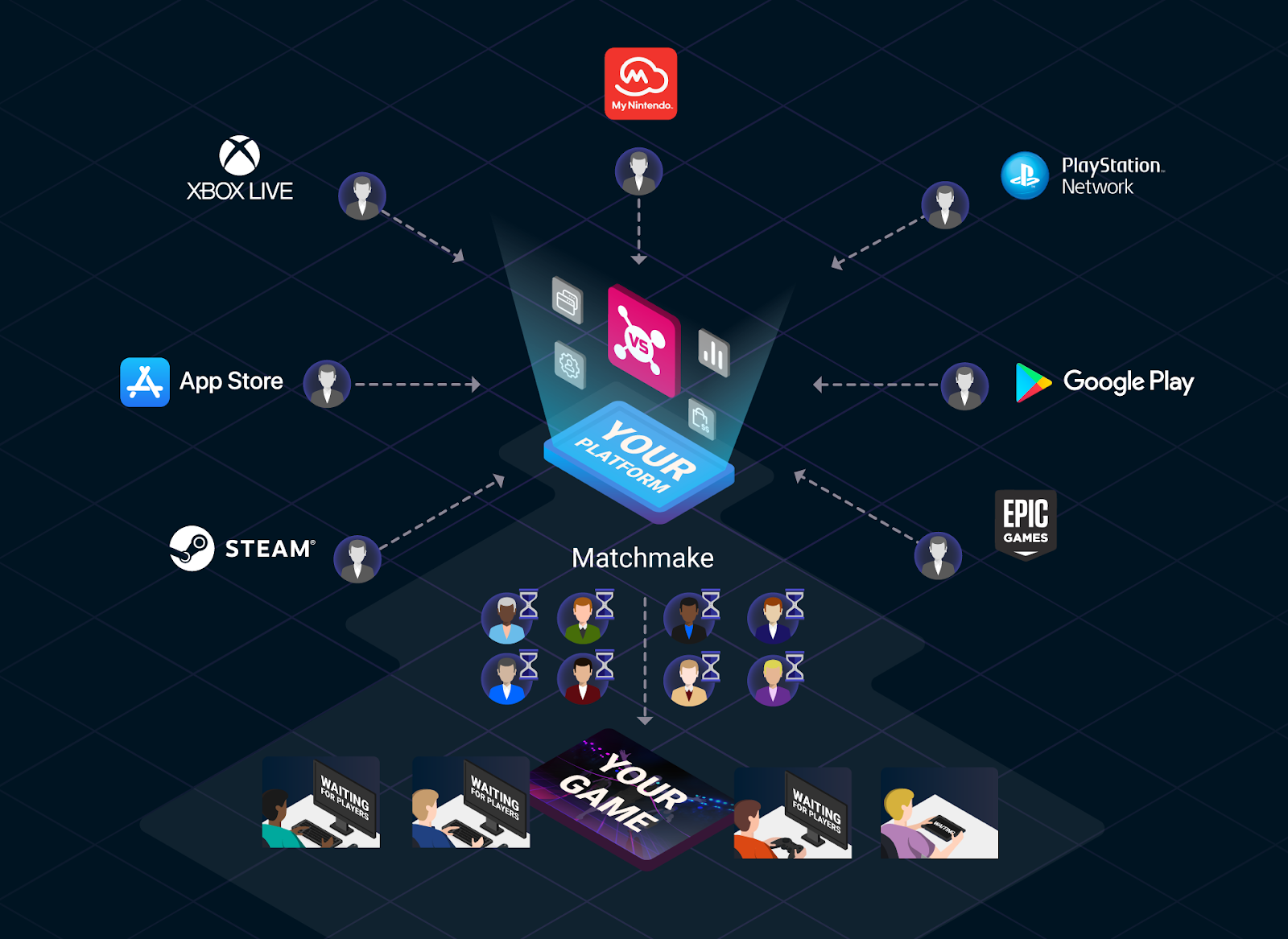Getting Started
Introduction to AccelByte Gaming Services (AGS)

Backend Services
Skip boring dev work with plug-and-play systems for 80% of your game’s backend

Backend Customization
Build 20% of the backend that makes your game unique without managing it

Server Orchestration
Automate spinning up and scaling servers globally for smooth, low-latency sessions

Build Distribution
Deliver builds faster to testers worldwide so you can ship multiple times a day

Crash Reporting
Catch and fix bugs before players see with real-time crash data and full context

Tools & Utilities
Monitor gameplay, test your setup, and tweak your game without juggling external tools
Introduction to AccelByte Gaming Services (AGS)
Learn to use AGS with our demo game "Byte Wars"
Connect and get support with other members of the AccelByte Community
Submit and review tickets while directly connecting with AccelByte
Join our Discord for support, insights, and networking!

AccelByte’s Train Chiou explains how backend-as-a-service solutions evolved from industry experience, empowering anyone to implement Cross-Platform and more for their games.
Cross-Platform gaming is becoming more and more the norm. Games distributed on different platforms have historically been disparate player communities. Games like Fortnite or Rocket League have demonstrated that it is possible to unify a game’s community through a set of backend services that align with the game, not the store or device. When creating a game, it might be daunting to take on the challenge to develop and operate your own backend services. After all, major publishers have spent significant time and resources to build out platforms of their own. There is a high initial investment and on-going cost to power an online game. However, there is a recent influx of game backend-as-a-service options that make it possible for anyone to Cross-Platform.
Why pursue Cross-Platform when there is both an initial expense and an ongoing operational cost? Players can benefit from a unified player base so they can play the game with friends regardless of the gaming platform. They are able to connect more directly with the game and be recognized for their loyalty to the IP. Store platforms are walled garden ecosystems and by having a game platform of your own you take ownership of the relationship with the community. Through your own backend services, provide value to players beyond just Cross-Platform. Unify the player community, more direct control over their interaction with the game, and gain knowledge about the players through platform & game telemetry.
When distributing through each store and taking a dependency on the services they provide, the game community is segregated per platform.

Instead, providing your own backend services unifies the game community and even a franchise. A single backend to rule them all.

A downside to having your own backend services is a smaller social graph. Store platforms that sell thousands of games will have a social graph that is larger than any one game. From a different perspective, those big store social graphs are excellent sources for player acquisition. There is a cost to acquire players from each store platform, so having a game platform of your own lets you keep those players as yours and possibly introduce new titles and provide Cross-Title benefits moving forward. Track the lifetime value of a player and reward them for their loyalty across IPs. When done right, a backend of your own is a win-win for both players and developers/publishers.
Electronic Arts built Origin. Ubisoft has Ubisoft Connect. Blizzard Entertainment has been nurturing a Battle.net community for multiple decades. They might have had a head start, but it means they have forged the way for others to learn from their failures and successes. They have faced various challenges and established a precedent for new paradigms.
Game platforms face a similar set of challenges. First, your own platform will need to track player accounts. Introducing yet another identity for players to manage can be a burden. Supporting account linking is a way to mitigate this and make the player experience more seamless. Games have started to introduce registration experience on initial launch as well as provide web portals for out-of-game account management. With the one-time activity to link game and store platform accounts, the player can authenticate themselves in-game via the store platform account in subsequent logins to the game. Players can also link multiple store platform accounts to the same game platform account and be able to be recognized as the same player across platforms.
Another challenge is the ongoing operations of your own platform. Games with a global player base need to be operational 24/7 which requires service runtime engineers to monitor and keep the platform healthy. Monitoring the player community, platform health, and the ability to scale platform services up or down is a simplified summary of managing a live online game. Solutions that offer backend-as-a-service will have Service Level Agreements and provide technical operations as a feature of the service.
While technical operations might be covered by a service provider, live operations like community management, customer service, or commerce management are also crucial roles for the success of a game with live services. It is important to have the necessary administrative tools and reporting dashboard to operate the game just as you would drive a car. Community management may need to ban negative players from the community, customer service will need to troubleshoot player issues in the game, and store managers will need to run promotions for in-game stores.

Circling back to Cross-Platform Play, having a unified game platform to rule them all across different store platform distributions of the game lets you unify the player base. Two players, one on Xbox and another on Playstation, would both be treated as equals on the game’s platform. A matchmaking service can matchmake them using their identities on the game platform instead of being segregated by the store platform. Policy, not technology, might be the only thing preventing full Cross-Platform Play. Currently, on PC platforms, the same game distributed via Steam or the Epic Games Store is expected to play with each other as long as you have the backend to support it.
As gaming enters the Cross-Platform era, both play & progression across any platform are becoming standard features for online games. Can’t imagine a phone industry where you can’t make a phone call between iPhone or Android devices. We will look back and realize how basic Cross-Platform play is as a feature. All the other benefits like knowing your players better, a unified player base that aligns with your brand, and the potential of many other live service features can help make the investment and on-going cost worthwhile.
In summary, enabling Cross-Platform with your own game backend has significant value beyond unifying the player community of a game. There may be an initial investment and ongoing cost to provide the necessary services, but that cost is significantly lower now given a plethora of game backend-as-a-service solutions like AccelByte, Beamable, Brain Cloud, ChilliConnect, Epic Online Services, and more. These solutions are built from the experience learned from other major platforms, empowering anyone to Cross-Platform.
Interested in learning more about our solutions? Get in touch here.
Train Chiou has been developing digital platforms for over 15 years working at Bing Maps for Enterprise, Xbox Live, Epic Games, and Twitch. He is now working as Director of Product at AccelByte, a one-stop-shop for live game services.
Reach out to the AccelByte team to learn more.